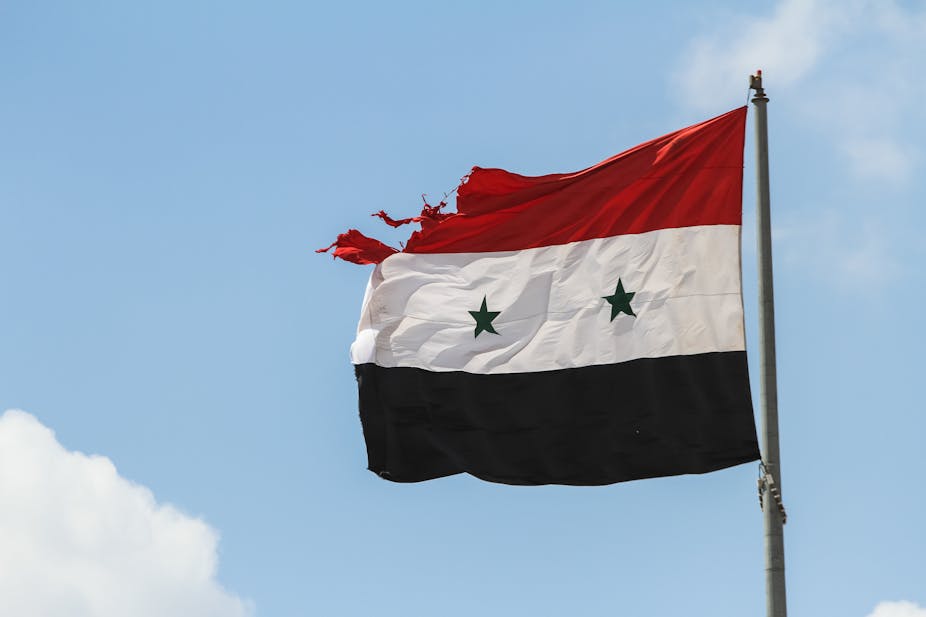When the Syrian town of Al Qaryatayn was recaptured from IS by government forces, the media coverage was predictable and depressing. Reports highlighted the damage and desecration of holy buildings treasured by the Christian inhabitants, in a town apparently divided by religious faith. None of the reports described Qaryatayn in a way that is familiar to its residents. How do I know this? Well, for around three years I became an adopted Qurwani (as natives are known) and, although I have been unable to return since 2010, I have stayed in contact with my friends there and know how they feel about their lives since the war began.
Qaryatayn is one of the most remote and impoverished towns in Syria, and was never on the tourist trail. Like its more celebrated neighbour Palmyra (three hours away) it exists because of an ancient oasis. But what Qaryatayn lacks in glorious classical monuments (even the monastery was a simple modest mud brick structure) it makes up for with a fascinating traditional culture and distinct community identity.

When I first visited in 2001 I was told the name of the town came from the Syriac words for “two villages”. Long ago, two tribes had inhabited the land around the oasis and been early converts to Christianity. When they heard of the rise of a new religion (Islam) it was decided that one tribe would become Muslim and the other would remain Christian. Whichever became dominant, that tribe would always protect those who followed the other faith. This was believed by all Qurwani who viewed Dayr Mar Elian esh Sharqi (the monastery of St. Julian of the East) as a shrine for the whole town. From the inscription over the monastery entrance it was clear that Muslims and Christian had prayed there together since at least the 15th century. Mar Elian was a source of pride to all Qurwani and its destruction has greatly distressed both faiths.

In 2001 I became only the third foreigner to live in Qaryatayn. The first was archaeologist Gertrude Bell almost exactly a hundred years previously, followed by a Norwegian lady missionary in the 1920s and then me.

At first the Qurwani were a little suspicious of me and my bicycle (the only one in town with a light, which attracted plenty of attention in itself). It was not unusual for me to cycle to a workshop or meeting only to have the bike thrown into the back of a truck so I could be driven home. A woman on a bicycle was not considered decent. And until I got to know the community well I could not tell who was Christian and who was Muslim within the 40,000-strong population. All the married women wore flowing kaftans and headscarves, the younger men jeans with Western shirt, and the old men had long galabiyehs with kefiyehs around their heads.

In such a remote town job prospects were non-existent and the town was being sapped of its youth who went to Homs or Damascus to study and never returned. Those who remained followed their fathers as herdsmen, craftsmen or shopkeepers. For the girls there was even less choice – kindergarten teacher or very early marriage.
But while life was short of material possessions and life choices, the town overflowed with love and laughter. What made Qaryatayn different from other places I knew in Syria was the depth of community spirit. People had very little but were prepared to share what they had and I often saw neighbours taking hot food to the sick or elderly in a manner that meant nobody ever felt isolated. This generosity was soon extended to me and I would often return home to find a plastic pail of grapes or some stuffed courgettes left at the door.
Qaryatayn’s position on the boundary of the Syrian steppe and the desert means it is a particularly dusty and arid place to live. Every afternoon a hot wind sweeps across the town from the west whipping up a layer of dust and dirt that stings the eyes. Everything about the town is dust coloured. The traditional village houses are built of sun dried mud brick and set in shady yards where a few chickens might scratch around in the dirt beneath grape vines. But the Qurwani are fiercely house proud. Floors of polished cement are scrubbed to a high shine and covered with colourful plastic mats in the summer and overlaid with wool and cotton ones in the winter. Homes have little furniture, with fabric-covered sponge pads and cushions lining the walls for reclining during the day and sleeping on at night.

When Qaryatayn was taken by IS last year my thoughts went to my many friends there. I have since had the opportunity to talk to people who have survived being IS prisoners. My Christian friends were just as distressed over the destruction of the Sunni town graveyard as they were over the demolition of Christian graves and the monastery. They were clear that the murderous jihadis who overran their town had nothing in common with their Muslim neighbours who had defied the invaders to try and protect Christian friends. After almost 1,500 years the promise of friendship made between the two tribes still holds true today. All are united by a hope that the war will end and they can return to life as it was before. They were extremely poor and life was difficult, but they had peace. And the experiences of the last year have taught them to treasure even more the community spirit that we all took for granted for so long.

